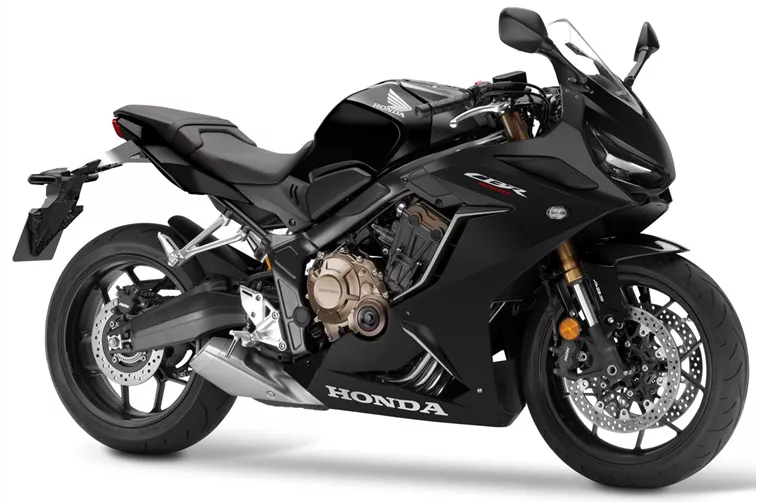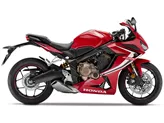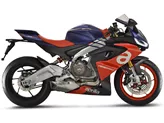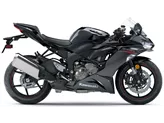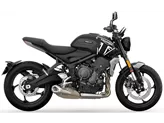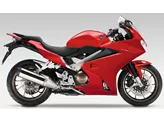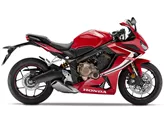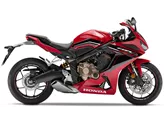Kawasaki Ninja ZX-6R 2019 vs. Honda CBR650R 2021

Kawasaki Ninja ZX-6R 2019
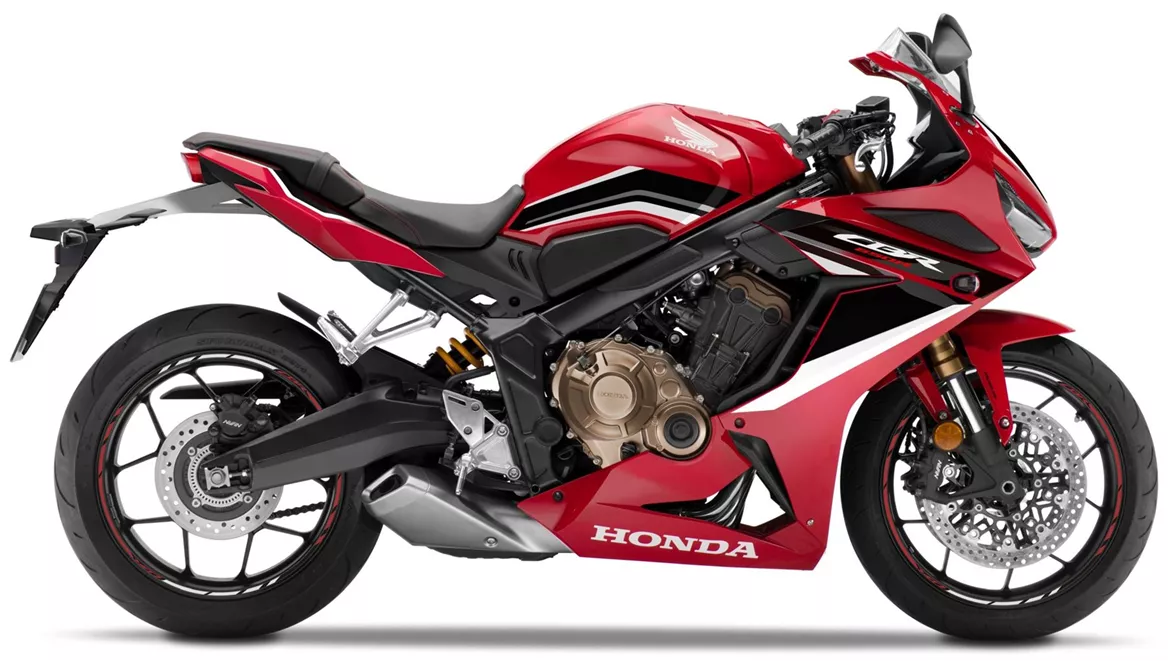
Honda CBR650R 2021
Vue d’ensemble - Kawasaki Ninja ZX-6R 2019 vs Honda CBR650R 2021
In terms of engine performance, the Kawasaki Ninja ZX-6R 2019 boasts a powerful inline four-cylinder engine with a displacement of 636cc. It delivers an impressive 130 horsepower and 70.8 Nm of torque. The engine features a DOHC configuration with four valves per cylinder, providing excellent power delivery throughout the rev range. The compression ratio is 12.9, ensuring efficient combustion and optimal performance. On the other hand, the Honda CBR650R 2021 is equipped with a slightly smaller inline four-cylinder engine with a displacement of 649cc. It produces 95 horsepower and 63 Nm of torque, offering a slightly less aggressive performance compared to the Ninja ZX-6R. The engine also features a DOHC configuration with four valves per cylinder and a compression ratio of 11.6.
In terms of suspension, both motorcycles feature upside-down telescopic forks at the front. The Kawasaki Ninja ZX-6R 2019 is equipped with a Big Piston fork with a diameter of 41mm, providing excellent damping and stability during aggressive riding. The rear suspension is a swing arm with a monoshock, offering adjustable compression, preload, and rebound settings. The suspension components are made of aluminum, ensuring lightweight and responsive handling. On the other hand, the Honda CBR650R 2021 also features an upside-down telescopic fork with a Big Piston design and a diameter of 41mm. The rear suspension is a swing arm with a monoshock, offering preload adjustment. While the suspension setup is similar to the Ninja ZX-6R, the Honda CBR650R lacks the additional compression and rebound adjustment settings.
In terms of chassis, the Kawasaki Ninja ZX-6R 2019 features an aluminum frame with a twin-tube, perimeter, and extruded design. This provides excellent rigidity and stability, allowing for precise handling and cornering. The rake is set at 66.5 degrees, and the trail is 101mm, further enhancing the bike's agility. On the other hand, the Honda CBR650R 2021 features a steel frame with a twin-tube design. While it may not offer the same level of rigidity as the Ninja ZX-6R's aluminum frame, it still provides a stable and balanced ride. The rake is set at 64.5 degrees, and the trail is 101mm, offering similar handling characteristics to the Kawasaki.

Kawasaki Ninja ZX-6R 2019
Both motorcycles are equipped with double disk brakes at the front with a diameter of 310mm. The braking technology is radial, providing excellent stopping power and precise control. The advanced rider assistance systems on the Kawasaki Ninja ZX-6R 2019 include ABS, riding modes, ride by wire, and traction control. These features enhance safety and allow for customizable riding experiences. On the other hand, the Honda CBR650R 2021 only features ABS as an advanced rider assistance system.
In terms of dimensions and weights, the Kawasaki Ninja ZX-6R 2019 has a front tire width of 120mm and a rear tire width of 180mm, both with a diameter of 17 inches. The wheelbase is 1400mm, providing stability at high speeds. The seat height is 830mm, and the fuel tank capacity is 17 liters. On the other hand, the Honda CBR650R 2021 has the same front and rear tire dimensions as the Ninja ZX-6R. However, it has a slightly longer wheelbase of 1450mm, offering increased stability. The seat height is lower at 810mm, and the fuel tank capacity is 15.4 liters.

Honda CBR650R 2021
In terms of strengths, the Kawasaki Ninja ZX-6R 2019 excels in engine performance, offering a great mix of revving and torque. It provides a lively and exhilarating riding experience without sacrificing comfort. The responsive fork and adjustable chassis contribute to its excellent handling capabilities. On the other hand, the Honda CBR650R 2021 boasts a resilient four-cylinder engine and a comfortable seating position. The chassis has been improved for 2021, providing enhanced stability and control. The bike also has a cool and stylish look, appealing to riders who value aesthetics. Additionally, the Honda CBR650R is easy to operate, making it suitable for riders of all skill levels.
In terms of weaknesses, the Kawasaki Ninja ZX-6R 2019 has some details that could use more finesse, such as the number plate holder and indicators. The overall silhouette of the bike is not as sporty as some riders may prefer, lacking aggressiveness in its design. On the other hand, the Honda CBR650R 2021 has a sluggish engine performance below 8,000 revolutions, which may be a drawback for riders seeking instant power. Additionally, the LCD display on the bike may appear outdated compared to more modern and advanced displays on other motorcycles.
In conclusion, both the Kawasaki Ninja ZX-6R 2019 and the Honda CBR650R 2021 offer unique strengths and weaknesses. The Ninja ZX-6R excels in engine performance and handling, providing a thrilling riding experience. On the other hand, the CBR650R offers a comfortable seating position and improved chassis, appealing to riders seeking a balance between performance and comfort. Ultimately, the choice between these two motorcycles depends on individual preferences and priorities.
Caractéristiques techniques Kawasaki Ninja ZX-6R 2019 par rapport à Honda CBR650R 2021
Avantages et inconvénients en comparaison
Avantages et inconvénients en comparaison
Kawasaki Ninja ZX-6R 2019

La Kawasaki Ninja ZX-6R est une moto supersport bien dimensionnée. Avec ses 130 ch, elle permet une conduite sportive mais contrôlée. Le rapport de transmission plus court et la cylindrée supplémentaire de 36 cm3 permettent de rouler un peu plus feignant pour débrayer. Un digne virage pour le segment des supersports de 600 cm3.
Honda CBR650R 2021
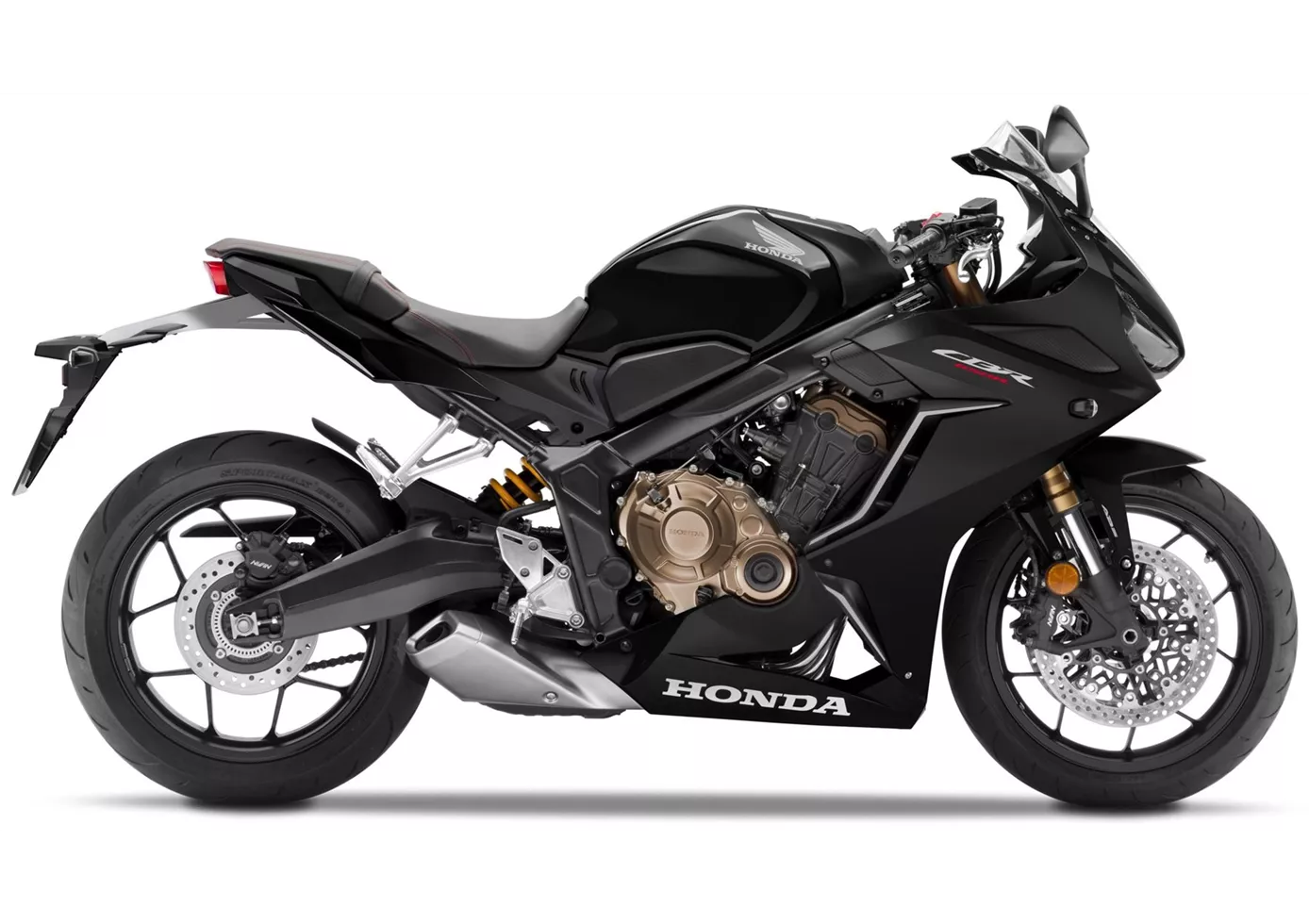
La mise à jour 2021 de la Honda CBR650R résout le plus gros problème du modèle de l'année dernière : le châssis trop confortable. La nouvelle fourche Showa confère à la sportive une réactivité nettement plus sportive, ce que l'on ressent immédiatement sur une route de campagne sinueuse. Il ne faut cependant pas s'attendre à une supersports de pure race, mais plutôt à une sportive routière adaptée au quotidien, sur laquelle on prend beaucoup de plaisir en selle, aussi bien sur le chemin du travail que lors d'une sortie le week-end.
Comparaison des prix Prix moyen du marché Kawasaki Ninja ZX-6R vs Honda CBR650R
There are a few key differences between a Kawasaki Ninja ZX-6R 2019 and a Honda CBR650R 2021. There are the same number of bikes of both models available on the 1000PS.de marketplace, specifically 4. It takes less time to sell a Honda CBR650R with 81 days compared to 160 days for the Kawasaki Ninja ZX-6R. Since model year 2005 1000PS.de editors have written 37 reviews for the Kawasaki Ninja ZX-6R and 14 reviews for the Honda CBR650R since model year 2019. The first review for the Kawasaki Ninja ZX-6R was published on 9/2/2002 and now has more than 5,800 views. This compares to more than 53,700 views for the first review on Honda CBR650R published on 10/8/2018.

